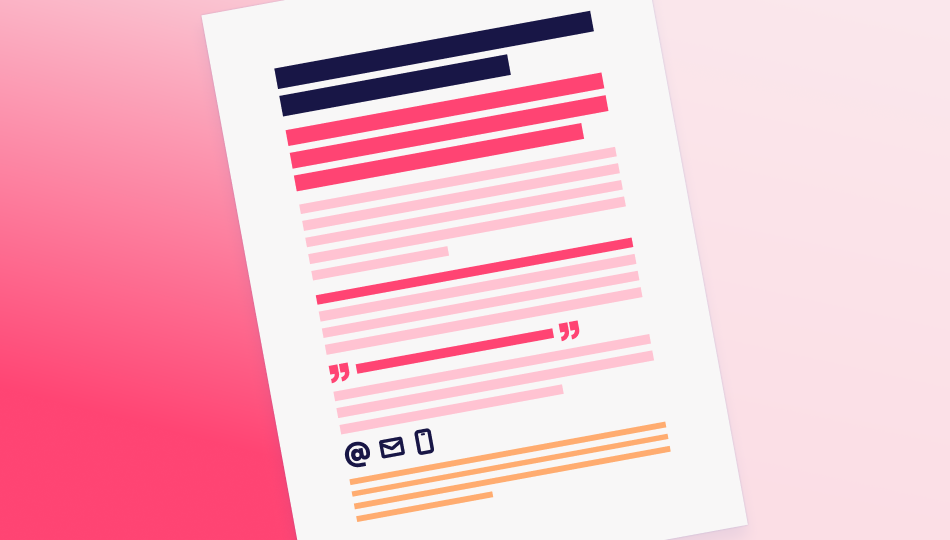We all know that communication is a powerful tool to drive your organization forward. Media analysis and evaluation will highlight the quality and impact your communication has on your organization. One way of doing this is by using a media monitoring tool. Any thorough PR strategy should include media monitoring, the process of reading, watching, and listening to the news, then selecting and evaluating information that contains specific keywords or subjects relevant to you. In this article, we will look further into media monitoring, what it is, how it can be done, and the possible outcomes of using it.
What is Media monitoring?
Measuring and evaluating your communication is a prerequisite for demonstrating the impact and value of the work and investment behind it. The method of tracking media coverage of campaign-related problems is known as media monitoring. This is crucial for any campaign that aims to reach media consumers, including those who consume content from both traditional (newspapers, TV, and radio) and new media sources (online news sites, blogs, etc). Media monitoring tools provide you with information that is crucial for your business right there on the site. To get a sense of your media exposure and the many contexts in which your brand is being recognized, keep an eye on news sites, blogs, and social media. You may better assess the effects of your efforts and stay updated on industry trends by keeping an eye on the media. This article will help you use media monitoring more expansively and creatively. Specifically, it will help you to be more proactive in your approach and to get the best out of the current monitoring tools you use.

What is Social listening?
Tracking mentions and conversations about your brand on social media sites, then evaluating them for insights to find chances to take action, is known as social listening. It basically comes down to the process of finding and evaluating online comments made about a business, person, product, or brand. As commonly known, internet conversations generate enormous amounts of unstructured data.
You can break it down into two steps:
Step 1: Keep an eye on social media platforms for mentions of your company name, rival brands, products, and industry-related keywords.
Step 2: Examine the data to find practical applications for what you have learned. That might be as simple as thanking a satisfied consumer or as complex as completely changing the positioning of your business.
The key is to combine skills and social listening as part of the overall communication measure with the right tools or software.
Still feel a bit unclear?
Do not worry, below is a checklist for social listening.

How to work with Social listening?
1. Use a good monitoring tool
A professional data collection tool is essential for you to work strategically with social listening. There are many different tools on the market, do your research and invest in one that can do a lot of the work for you. It is always smart to streamline your work, right?
2. Keep it simple, work smart
Make sure that you are aware before you start what it exactly is that you want to research. Is it your company, relevant topics, your competitors or the industry as a whole? By being specific beforehand, you will avoid becoming overwhelmed by all the data.
3. Turn data into key insights
Double-checking that you’ve applied the correct settings in the social listening tool will ensure that you collect the data that meets your needs. Once you’ve done this, you can seamlessly use the insights from the data actively to create both more relevant and sharper communications.
4. Be proactive and keep your eyes on the prize
Adjust as you go. That is, analyze your projects while they are still in progress. By working proactively, you will get more value out of the tool, it rarely provides value to measure backward against a crisis or campaign that didn’t work.
5. Document, share and use your insights
Documenting and sharing your findings and insights generates both curiosity and new hypotheses. Be careful to share important information and insights internally with management, the board, and other relevant departments. Sharing interesting data and knowledge that supports your company’s return on investment can create new opportunities – both for the company and for you.
It is safe to say that social listening is essential for you to measure and understand the impact of your PR work. Now, let us look into why it is important to track mentions.

How to work with media monitoring?
So, why should I care about mentions? Doing our job without external information basically means that we are working in the blind and limiting ourselves when it comes to competition.
Do the right people even know about your brand? Do they understand what you actually do? What do they think of you? These may be difficult questions, but the courage to ask them and invest in a media monitoring tool to get in-depth answers will take your brand much further compared to those who never dare to take the plunge.
Media monitoring not only helps you measure your impact and market share, but it also helps you find misconceptions about your brand or product when they arise. Take control of your brand’s reputation and customer perception. Media monitoring will help you:
- Understand your target audience
- Join different conversations
- Mitigate risk
- Research for new ideas and inspiration
- Identify new media relations
- Evaluate your efforts
- Search and identify new market opportunities
- Look for insights in new places
- Be creative and flexible in your planning
- Build brand reputation and perception
1. Listen before you speak
When building a strategy, whether it is for your overall business, marketing, or a specific campaign, it is all about being relevant to your audience. But how can you ensure that you are relevant to your audience? By listening before you speak.
Media monitoring is listening. It is about keeping your ears (and eyes!) open to the conversations around you that could be relevant to your specific brand.
By paying attention to what is being said, upcoming trends, and the latest news in your industry, you can take advantage of that when creating your own content. This helps you stay relevant to what is being said and discussed around you. Have you ever found yourself stuck on what to name your new blog post or YouTube video to ensure that your audience can find it? Are you ever unsure if you and your target audience are speaking the same language? Media monitoring helps you bridge the communication gap so you do not talk a lot about your new “SMS tool” while your future customers are dreaming about and looking for a good “text messaging platform”. Similarly, trying to sell your new vegan burger as being as similar to real meat as possible while your audience is actively debating the climate impact of various vegan products is a lost opportunity.
2. The benefits of insights-driven decision-making
PR and communication strategies can vary hugely depending on your company or industry. Sometimes they are driven by experience, knowledge of the market – or even ‘gut feeling’. But there is no substitute for data. Monitoring has always been about gathering enough tangible evidence to generate confidence in your communications. By following what is being said in the media, in your industry, and amongst your audience, you can create compelling content and tap into the trends of today. Last, but certainly not least, media monitoring can be used to analyze major trends and important keywords on which content creation can be based. Capturing where the current conversation is and acting quickly to get into it can lead to huge PR gains. It allows you to tune in on what is relevant to your customers right now. An example of this is known as “newsjacking”, which involves inserting your brand into a major news story or conversation as a form of real-time brand communication. Success requires getting into the game early enough to become part of the news as it grows – and to find the game itself quickly enough, real-time media monitoring is crucial.
3. Media monitoring is not just for reactive purposes
Media monitoring is primarily viewed by many as a way to keep up to date with:
- What is being said about your brand
- To monitor when something in your communication lands wrong
- When you need to prevent a possible crisis. (Read our blog about crisis management if you want to learn more).
It can take years to build a strong and positive brand, but it can take hours to lose it in a world where information can go viral faster than you can say “PR crisis”. A quick and well-informed response before a conversation escalates is absolutely essential to stay ahead of the curve and gain control of the situation. Be sure to set up a notification for dramatic increases in mentions to get early notice of a potential crisis. Any good tool or solution will do this for you, of course.
Of course, these are all important things but, you can do so much more with media monitoring. Today, a more positive and proactive approach to monitoring can help you stay ahead of the game. By anticipating a changing situation, you can be ready to grab an opportunity before it arrives.

4. A source of inspiration and strategy
There is a lot of unexplored potential in using a media monitoring tool when coming up with new ideas or concepts for your business.
A major challenge in PR and communications is creating relevant content for your target audience. But by using media monitoring, you can gain insights into news, trends, and stories that will help you decide on the content of your next press release, blog post, or other information you want to share.
It is simply a matter of opening up to the idea of using media monitoring as an opportunity to be inspired, discover patterns and learn new things, not just a tool to monitor your PR activities (which is, of course, also important to see if your activities are successful).
Use the tools you have today
You do not need the most expensive, detail-oriented, and sophisticated solution on the market. Most media monitoring tools can help you gain the insights you need to create strategic communication activities and achieve your goals. Look at solutions that give you the information you need in a user-friendly way.
When you have established how to monitor, let’s look at what you should monitor.
What to monitor and track?
Yourself
This one you might know. You need to monitor the media for mentions of your brand. It is important to look at what is being said and by who. By doing that, you can track the impact of your activities and keep up if you need to respond to anything.
Benchmark against others
Benchmarking can be used in two different ways. You can track and compare current activities to previous ones, or you can benchmark against your competitors and their activities (if your media monitoring tool has that function).
Competition
You know what they say – keep your friends close, but your enemies even closer! Do not forget to keep an eye on the competition for early notifications of changes. Adjust your product targets and communications as needed, copy competitors’ successful actions (and learn from the less successful ones) and keep an eye out for untapped opportunities. Isn’t it great to remind everyone how your own product has won awards for being environmentally friendly while your biggest competitor is in the midst of a crisis that is about being the complete opposite?
Industry
While tracking your competitors is essential it is also very important to keep an eye on your industry in general. Overseeing your industry allows you to keep track of market changes, trending topics, and news worth republishing.
Relevant keywords
Only you know what might be relevant – but be sure to include keywords that can lead you to current content ideas and industry trends. If you work in vegan food, it might be a good idea to keep an eye out for topics such as “meat-free options”. With digitisation, there can be rapid and unexpected changes in the market. Make sure your company never gets caught off guard, and you will be a hero in the boardroom.

Expand your search horizon
Most marketing teams instruct their monitoring solution to look for simple mentions such as: – Company name – Product names – Key individuals – Competitors – Industry buzzwords. Tracking the performance of these keywords over long periods can offer a snapshot of a company’s media and public perception, but it is also rather predictable.
The power of today’s monitoring tools allows for more depth and experimentation. Different combinations of keywords produce more valuable insights.
As with anything else, modern monitoring is about striking a balance between tried and tested methods and a new world where better tools and a proactive attitude can help expand your horizon.
Modern monitoring strategy
Today’s fast-paced world teaches us we need to be more proactive in all aspects of our business, and monitoring allows you to reach new audiences and engage with more people.
Using a media monitoring tool helps you understand what is being said about you and allows you to get inspired, respond, and move conversations in new directions.
By changing the way you work with digital monitoring tools, you can gather better insights and form stronger relationships with your clients and peers. Modern monitoring is about being flexible and creative. Combining the tried and tested methods of the past with a new view on monitoring will open you up to a world of new possibilities.
Summary
Keeping track of perception, industry trends, competitor initiatives, and customer complaints is a full-time job in itself; analyzing and summarizing the information is another. This is where the new generation of media monitoring tools really comes into its own.
Look at it this way: would you rather spend a lot of money when things have already gone wrong somewhere with answering just one of your questions, or regularly invest a smaller amount to have your finger on the pulse – and get key insights and metrics packaged for you?
In addition to labor savings, a good media monitoring tool in the right hands can be a huge value creator across your entire business. Although media monitoring is still widely misunderstood as a crisis prevention tool only, this misconception often reflects a poor understanding of the full range of uses it enables for a smart PR and marketing team. Hopefully, this article will have cleared up some of the questions you might have had about media monitoring. In the end “is it worth it?” might be the wrong question. A more relevant question would be “can we afford not to have these insights?”.




